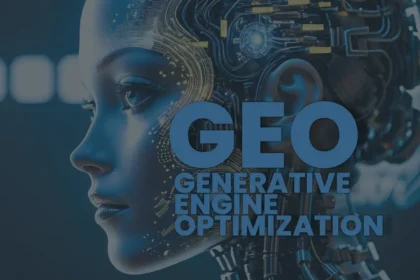Predictive analytics is revolutionizing the way marketers approach strategy, customer engagement, and growth. By moving from reactive tactics to proactive planning, businesses today are empowered to not just understand what happened but to anticipate what will happen. This article explores the what, why, when, where, and how of predictive analytics in modern marketing, traces its origins, future implications, and includes real-world examples that highlight its transformative power.
What is Predictive Analytics?
Predictive analytics is a branch of advanced analytics that uses historical data, machine learning, and statistical algorithms to forecast future outcomes. In marketing, it enables businesses to:
- Anticipate customer behavior
- Optimize campaigns
- Personalize user experiences
- Allocate budgets more efficiently
At its core, predictive analytics transforms raw data into actionable insights, helping brands make smarter, data-driven decisions.
Why Predictive Analytics Matters in Marketing
With the explosion of digital touchpoints, marketers are drowning in data. Predictive analytics turns this data overload into an advantage by:
- Improving Customer Targeting: Identify high-value leads based on behavior patterns.
- Reducing Churn: Predict which customers are likely to leave and intervene early.
- Boosting ROI: Optimize marketing spend by focusing on channels and messages with the highest predicted impact.
- Enhancing Personalization: Deliver the right message at the right time.
Stat Spotlight:
According to MarketsandMarkets, the predictive analytics market is projected to grow from $12.5 billion in 2024 to $28.1 billion by 2029.
When Did Predictive Analytics Emerge?
The roots of predictive analytics trace back to the 1940s with statistical modeling in quality control. However, its adoption in marketing surged in the late 1990s and early 2000s with the rise of CRM systems and digital data collection. Today, the evolution of big data and cloud computing has made predictive analytics accessible to businesses of all sizes.
Where is Predictive Analytics Applied in Marketing?
Predictive analytics touches nearly every area of digital marketing:
- Email Marketing: Predict open rates, click-throughs, and unsubscribe likelihood.
- Content Strategy: Recommend personalized content based on user behavior.
- Ad Spend: Forecast which ad placements will yield the best ROI.
- Customer Journey Mapping: Visualize and anticipate user paths to conversion.
How Predictive Analytics Works in Marketing
Step-by-Step Process:
- Data Collection: Gather data from CRM, website, social media, etc.
- Data Cleansing: Remove errors and inconsistencies.
- Model Building: Use statistical tools or machine learning to create predictive models.
- Testing: Validate models with real-world data.
- Deployment: Integrate predictions into marketing workflows.
- Monitoring: Continuously optimize based on performance feedback.
Real-World Example: Amazon
Amazon is a pioneer in predictive analytics. By analyzing customer behavior, purchase history, and browsing patterns, Amazon:
- Recommends products with uncanny accuracy
- Forecasts inventory needs
- Optimizes email campaigns and promotions
This data-driven approach has been key to Amazon’s industry-leading customer retention and conversion rates.
Case Study: Netflix
Netflix uses predictive analytics to drive content recommendations and improve viewer retention. By analyzing viewing habits, ratings, and watch time, Netflix:
- Recommends shows based on user profiles
- Predicts which original content will succeed
- Customizes thumbnails for better click-through rates
Netflix’s data strategy has led to a reduction in churn and increased time spent on the platform.
Tools for Predictive Analytics in Marketing
| Tool | Key Features | Best For |
|---|---|---|
| Google Cloud AI | Scalable machine learning & data pipelines | Large enterprises |
| HubSpot | Predictive lead scoring | SMBs using inbound marketing |
| Adobe Sensei | AI for content and experience optimization | Creative and digital marketers |
| Salesforce Einstein | Predictive CRM and sales forecasting | Sales and customer engagement |
| IBM SPSS | Advanced statistical analysis & modeling | Academic and enterprise users |
The Future of Predictive Analytics in Marketing
Looking ahead, predictive analytics will become more intelligent and integrated with AI. Future trends include:
- Predictive + Prescriptive Analytics: Not just forecasting, but recommending specific actions.
- Real-Time Predictions: Instant personalization based on current behavior.
- Voice & Visual Predictive Inputs: Predict outcomes from audio and image data.
- Greater Integration with MarTech Ecosystems: Predictive tools will be built directly into marketing automation, CRM, and CMS platforms, making advanced forecasting seamless.
Prediction:
Gartner estimates that by 2030, over 80% of marketers using AI-powered predictive analytics will outperform their peers in campaign performance and customer insights.
Key Takeaways for Marketers
- Start Small, Scale Fast: Begin with one campaign or channel and expand once you see success.
- Invest in the Right Tools: Use platforms that integrate AI and machine learning for more accurate predictions.
- Train Your Team: Equip marketers with the knowledge to interpret and act on predictive insights.
- Measure Continuously: Success depends on tracking and refining predictive models.
Conclusion
Predictive analytics is not just a tool, it’s a strategic asset. From understanding future customer needs to driving conversions, it empowers marketers to move from insight to action confidently. As technology evolves, those who harness predictive analytics will lead the next wave of marketing innovation.
Want to tap into the power of AI and predictive analytics?
At DzynBuzz, we create data-smart campaigns that deliver measurable impact.
Let’s build your next growth strategy together → Schedule an Appointment













